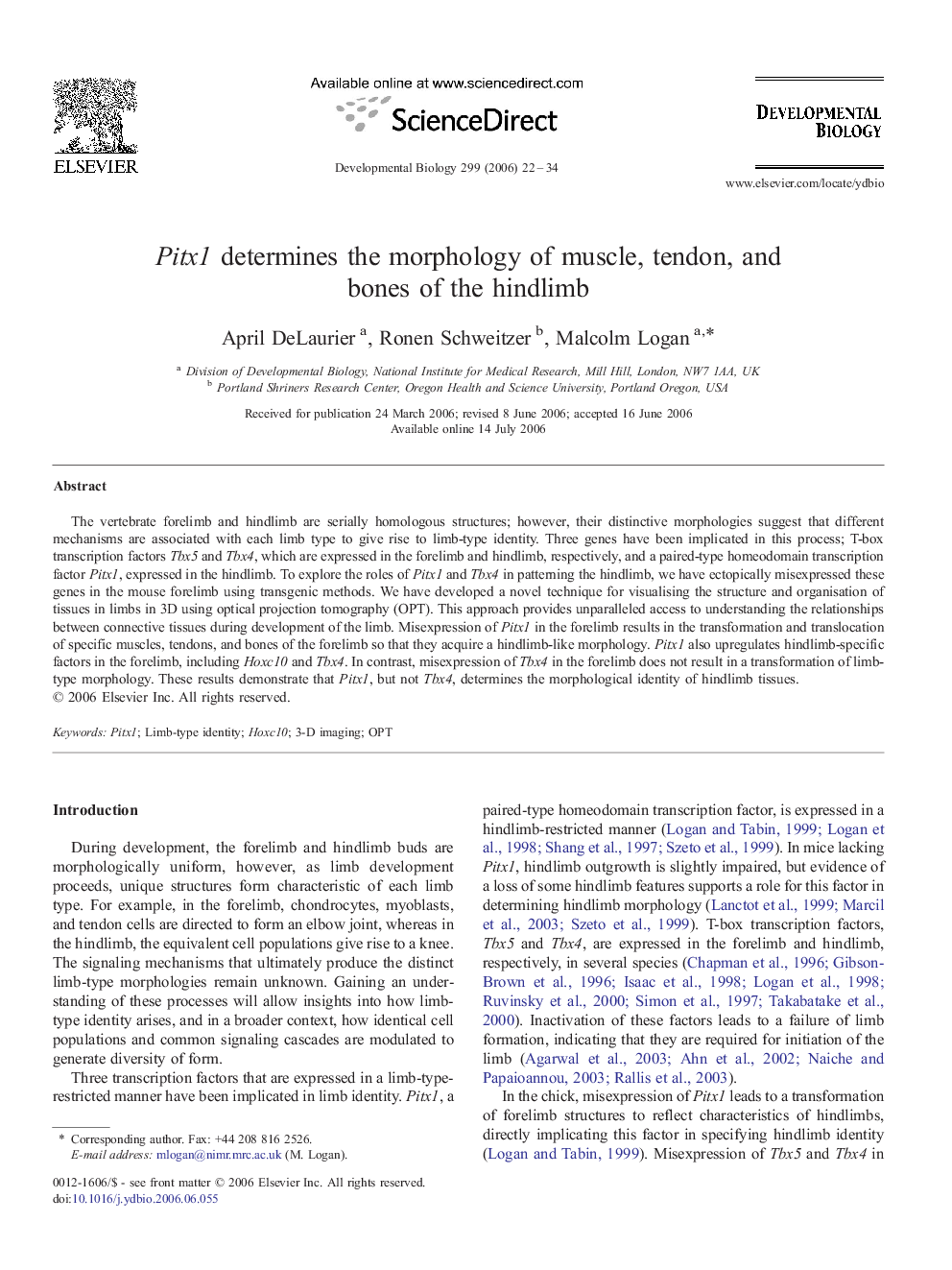| Article ID | Journal | Published Year | Pages | File Type |
|---|---|---|---|---|
| 2175504 | Developmental Biology | 2006 | 13 Pages |
The vertebrate forelimb and hindlimb are serially homologous structures; however, their distinctive morphologies suggest that different mechanisms are associated with each limb type to give rise to limb-type identity. Three genes have been implicated in this process; T-box transcription factors Tbx5 and Tbx4, which are expressed in the forelimb and hindlimb, respectively, and a paired-type homeodomain transcription factor Pitx1, expressed in the hindlimb. To explore the roles of Pitx1 and Tbx4 in patterning the hindlimb, we have ectopically misexpressed these genes in the mouse forelimb using transgenic methods. We have developed a novel technique for visualising the structure and organisation of tissues in limbs in 3D using optical projection tomography (OPT). This approach provides unparalleled access to understanding the relationships between connective tissues during development of the limb. Misexpression of Pitx1 in the forelimb results in the transformation and translocation of specific muscles, tendons, and bones of the forelimb so that they acquire a hindlimb-like morphology. Pitx1 also upregulates hindlimb-specific factors in the forelimb, including Hoxc10 and Tbx4. In contrast, misexpression of Tbx4 in the forelimb does not result in a transformation of limb-type morphology. These results demonstrate that Pitx1, but not Tbx4, determines the morphological identity of hindlimb tissues.
